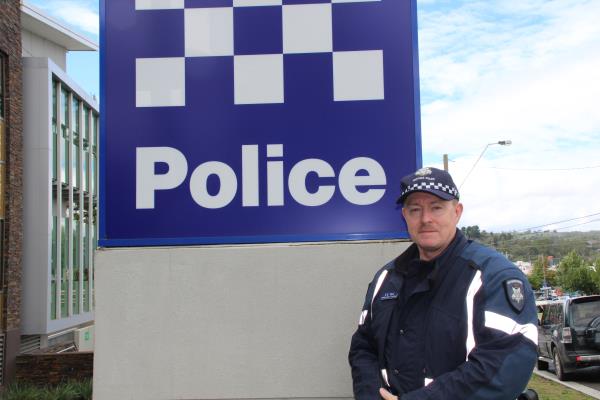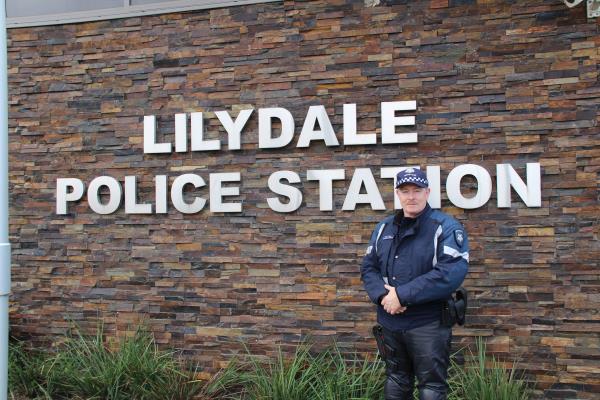By KATH GANNAWAY
GRAEME Rust probably knows the pitfalls of riding on Yarra Ranges’ popular scenic motorbike routes better than most.
As a member of Yarra Ranges Highway Patrol the Leading Senior Constable had ridden off-road before joining the force.
He got his on-road licence as an officer when he was 19 years old and joined the then Traffic Operations Group in 1985.
His credentials established, Graeme Rust would be a handy person for any bike rider to have a chat to … without the blue and red flashing lights – ambulance or police!
In addition to pursuit riding, which requires additional skills probably not recommended for recreational riders, police training included VIP escort work where one of the key lessons was about riding in a group.
That’s experience many of the motocycle riders pouring into the Yarra Ranges each weekend could relate to, and learn from.
Leading Sen Const Rust says there are always dangers associated with riding in a group.
“It’s about making sure everyone’s on the same page and you’re not going to do something that puts yourself or someone else at risk,” he said.
“The one big danger (in riding in a group) is when a friend asks ’can I have a go on your bike’ and they’re not aware of the different capabilities and how a bike handles slightly differently.”
Leading Sen Const Rust can draw on an experience on the Yarra Ranges roads for just about every conceivable situation.
“I’ve been to a collision where that happened,” he says. “A group of 120-odd riders and at the half-way mark two decided to change bikes.
“Within 5km down the road they came into the first bend; the first one came down and the other following too close came down next, with them both taken away by ambulance,” he said
“The first one came to grief because he wasn’t fully aware of the motorcycle he was riding and the second one because he was too close to the vehicle in front. A fatal flaw.”
When you’re on two wheels there are a whole lot of things that come into play between the way different bikes ride and tyres are crucial, he said.
“Under-inflated and they react one way, over-inflate them and they react another way.
“If you vary from the recommendations set by the manufacturers for certain types of tyres, the bike will handle differently, even if it’s the same bike.”
Even when the rider is right up with the tyre pressure, there are times when a bit more attention to detail would make life a lot safer for riders and a lot less frustrating for police.
“A lot of bike riders are aware of these things, but I stopped a guy riding with a group of around 12 people at Cumberland Junction near Marysville who told me he’d stopped at a service station on the way up and checked his tyre pressures,” Leading Sen Const Rust said.
“Have a look at this tyre … see how the steel belt is showing through?” he says recalling the conversation. “He said he didn’t even look at that.
“When you’re on two wheels and don’t have a shell around you to protect you, you have to rely on (checking) these things to keep you vertical and your tyres are the first contact point with the ground. They have to be right,” he said.
The second point of contact is often skin, which means protective clothing is vital for all riders.
Wearing appropriate clothing was something the TAC and Victorian Motorcycle Advisory Group push. But, apart from the helmet, there are no legal requirements to wear sensible clothing that at best could save riders from a nasty rash, at worst skin and flesh scraped to the bone on gravel.
Leading Sen Const Rust said that after nearly 30 years on the road, he can still be amazed at the sight of motorcyclists riding on a hot day in sneakers, shorts and a t-shirt – and helmet.
“They may feel that their skills are good enough to keep them upright, but it only takes an oil spot on the road and you don’t have that cohesion between your tyres and the bitumen surface and you’re skating on ice,” he said.
“Fall off, and if you don’t have the appropriate gear on, you will be down to skin and bone.”
And what about helmet cameras?
Leading Sen Const Rust says no-one really knows how having a camera stuck on the side of a helmet will effect it under the ultimate pressure. “Helmets are tested in a certain manner and when you start adding things, like a camera, you don’t know what it’s going to do if you hit the road; will it bounce the head in a different direction and snap your neck? We don’t know,” he said.
Bottom line is they’re not legal and police know it.
When it comes to GPS devices, they are legal, but come with a warning – exercise a bit of common sense.
“With motorcycles, where you look is where you go,” he said. “If you’re on a straight road and you glance down you shouldn’t have a problem. If you’re banked over and trying to negotiate a bend and you want to have a look at your GPS then that’s probably a bit of a fatal flaw.”
Most motorcycles have an audio capability, but essentially, multi-tasking on a bend, on a motorbike, isn’t clever – whether you’re male or female.
His top tips for riders are: “Don’t ride beyond your capabilities, or those of your bike, and always have good observations. Check the front, sides and back, keep an eye on your mirrors and make sure you do head checks”.
Recommended reading: VicRoads.
www.vicroads.vic.gov.au/Home/SafetyAndRules/SaferRiders/Motorcyclists








